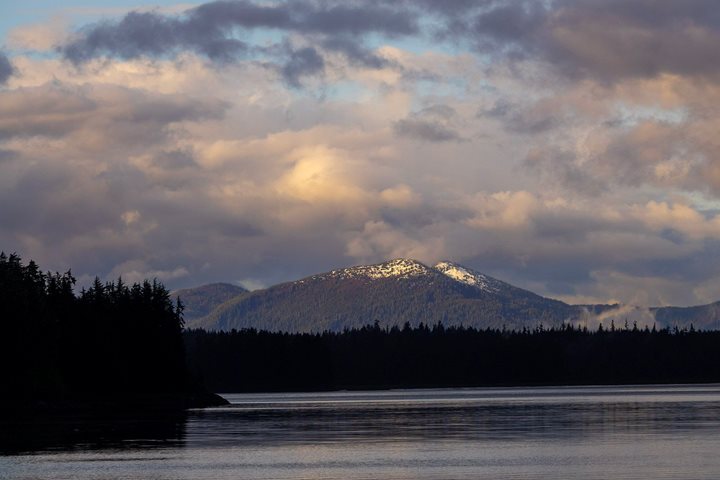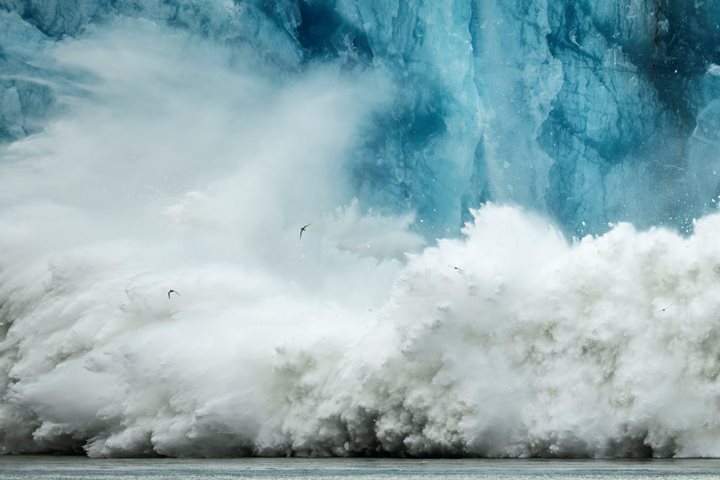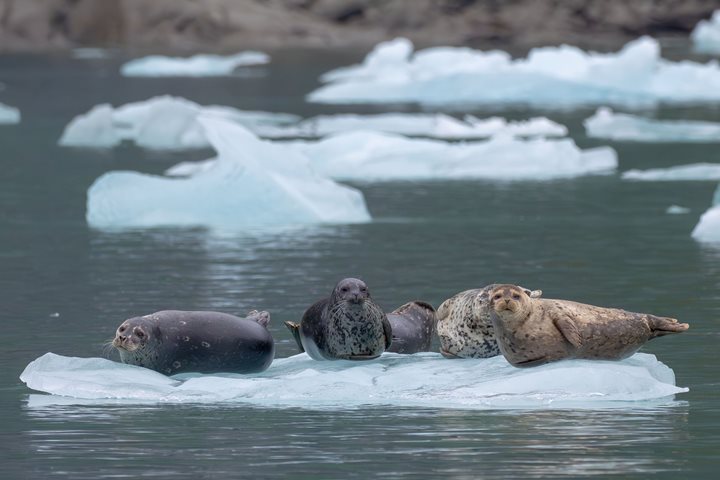After the Wrangell Narrows, we awoke to another glaucous day at anchor outside of Wrangell, a small, relatively undisturbed town of 2,000. Fishing is still the predominant activity and income, and lovely boats speckle the harbors and horizon. At the top of the dock, we were greeted by a few of the local youth who displayed their cache of garnets for sale. Wrangell garnets are unique because there is truncation between the twelve-faceted edges. These gems are special, and Wrangell only allows local Boy Scout troops to search for and sell them, keeping them from being exploited. We were privileged enough to take a jet boat capable of navigating the shallow water of the Stikine River. Arriving at Shakes Glacier, we marveled at its differences from other glaciers we have seen. The moraines and gravel covering the ice gave a much different and enriching experience. Those of us more curious about the cultural side of things enjoyed a city tour with the highlights of Wrangell. The first stop was an intimate visit to Chief Shakes house, a replica of the Tlingit building standing on the same isthmus. A stop at the excellently curated Wrangell Museum pieced together the rich history of humans and nature and how they intertwine. The tour was finished with a walk in a local muskeg, where the naturalist described the unique flora, like the carnivorous sundew, to our curious onlookers. After another exquisite lunch back aboard the ship, there was free time in town to explore, support the locals with souvenir shopping, and an opportunity to hike to a memorable viewpoint at the top of Mt. Dewey. The day concluded with a feast of fresh Dungeness crab, bringing full circle all we had learned throughout the day.
- Daily Expedition Reports
- 23 Jul 2023
Wrangell, Alaska, 7/23/2023, National Geographic Sea Lion
- Aboard the National Geographic Sea Lion
- Alaska
Cherese Taggart, Naturalist
Cherese grew up on an island in Washington, playing in tide pools and running amuck along the beaches. She now lives on a sailboat, lovingly restoring the fifty-year-old girl to her former glory to sail up and down the west coast.
Read MoreShare Report
Alaska Escape: LeConte Bay, Wrangell and Misty Fjords
VIEW ITINERARYRelated Reports
5/29/2025
Read
National Geographic Sea Bird
Endicott Arm
Dawes Glacier, located at the head of Endicott Arm in Southeast Alaska, is an active tidewater glacier in the remote Tracy Arm-Fords Terror Wilderness Area. Reaching the glacier requires a 30-mile journey through a narrow fjord lined with sheer rock walls rising over 3,000 feet. These cliffs are veined with waterfalls and often blanketed in mist. Throughout the fjord, remnants of the glacier float in the form of icebergs. The glacier feeds cold, silty meltwater into the fjord, giving the water a distinctive milky-green hue and supporting a rich marine food web. Harbor seals were hauled out on ice floes near the glacier. Gulls and Arctic terns were actively feeding, likely drawn by the small fish and plankton concentrated by the glacial outflow. The glacier calved several times, hurling large chunks of ice across the water’s surface, sending the birds fleeing. The sound of the ice hitting the water echoed off the steep rock walls that rise thousands of feet on either side.
5/27/2025
Read
National Geographic Sea Bird
Dawes Glacier in Endicott Arm
We could not have asked for a better way to end the expedition. Our last day was amazing! Visiting Dawes Glacier in Endicott Arm was a highlight with its crystal-blue ice and resting harbor seals floating by on the ice. In the evening, we even got to see a couple of humpback whales off the bow of the ship. We ended the day by watching images of the beautiful moments created on our expedition during the famed guest photo slideshow.









